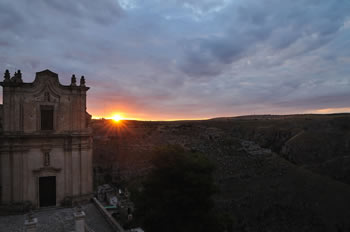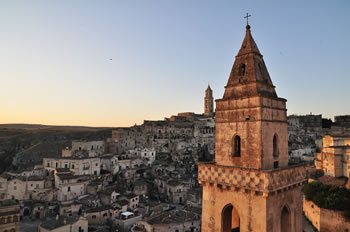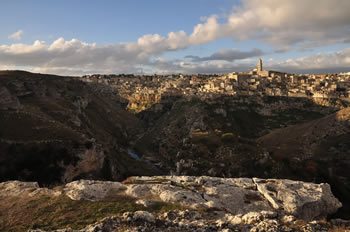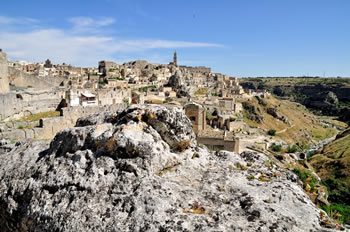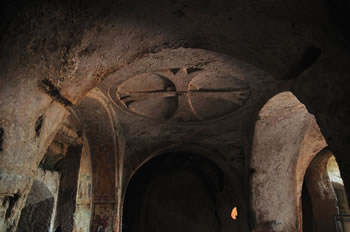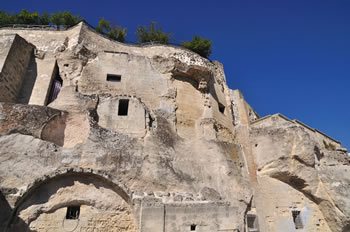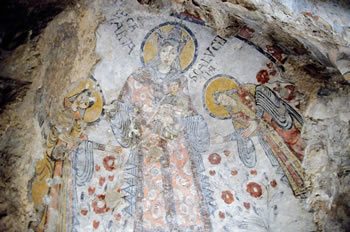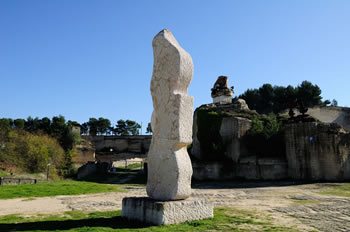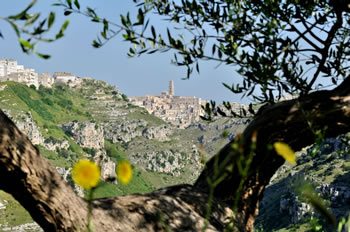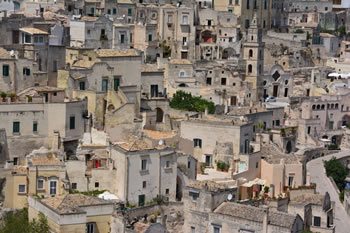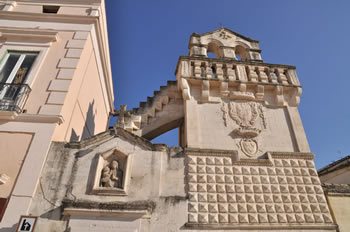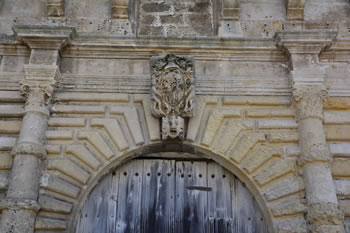Matera is one of the two regional county seats of the Basilicata region and it’s located on a plateau, namely the Murgia, which stretches out from Apulia’s Salento coasts to the Ionian coasts.
The city’s history goes back a long way, and it’s repeatedly gone through many millennia of human evolution: the Stone Age, the Metal Ages, late antiquity, the Middle ages etc, up to today’s day. Even though throughout history Matera has been subjected to some radical changes, it’s kept its characteristic appearance, which is strongly tied to its surrounding landscape, the Murgia.
The relation between nature and civilization can be observed both through the breathtaking landscape constituted by the original urban nucleus (the Sassi) and through the surrounding area, the Murgia Materana Park, comprised of canyons, ravines and plateaus created by the Gravina stream.
Matera
Matera charms tourists with its uniqueness, it’s a city that has often been described as magnetic, as it causes unforgettable feelings that astonish the visitors. It’s considered one of the rupestrian capitals of the Mediterrean area, as here one can observe traces of rupestrian civilization, a rare instance worldwide.
Because of their significant cultural value, the Sassi and the Murgia Materana Park were declared UNESCO World Heritage sites in 1993. (Commendably, they represent the first UNESCO site in Southern Italy) The Sassi comprise primordial cave settlements, underground churches, cave churches, noble mansions, archways and unique galleries.
They’re a mixture of historic and artistic urban areas made out of tufa stone. On the 17th October 2014 Matera was elected European Capital of Culture 2019.
Because of their significant cultural value, the Sassi and the Murgia Materana Park were declared UNESCO World Heritage sites in 1993. (Commendably, they represent the first UNESCO site in Southern Italy) The Sassi comprise primordial cave settlements, underground churches, cave churches, noble mansions, archways and unique galleries.
They’re a mixture of historic and artistic urban areas made out of tufa stone. On the 17th October 2014 Matera was elected European Capital of Culture 2019.
Over the years, various film directors have decided to shoot their masterpieces in Matera, as here on feels as though they’re being transported to a different age. The incredible landscape surrounding Matera preserves an outstanding heritage in regards to culture and traditions.
Additionally, it hosts (inter)nationally renowned exhibitions. Its history is complex yet fascinating, an amalgamation of different landscapes, civilizations and cultures. It’s a result of the rupestrian civilizations that have developed from prehistory to the middle ages, along with the coming of byzantine culture and the Normans. On top of that, the various building styles that have developed over the years (Romanesque, Renaissance, Baroque, etc) contribute to making the city’s architecture particularly original and unusual.
Tourists have the chance to discover the stages of a fascinating cultural development, comprised of traces, masterpieces, humble expressions just like cultured ones, etc. It’s the lengthy yet thrilling path that has characterised Matera’s history.
Additionally, it hosts (inter)nationally renowned exhibitions. Its history is complex yet fascinating, an amalgamation of different landscapes, civilizations and cultures. It’s a result of the rupestrian civilizations that have developed from prehistory to the middle ages, along with the coming of byzantine culture and the Normans. On top of that, the various building styles that have developed over the years (Romanesque, Renaissance, Baroque, etc) contribute to making the city’s architecture particularly original and unusual.
Tourists have the chance to discover the stages of a fascinating cultural development, comprised of traces, masterpieces, humble expressions just like cultured ones, etc. It’s the lengthy yet thrilling path that has characterised Matera’s history.

 Home
Home

